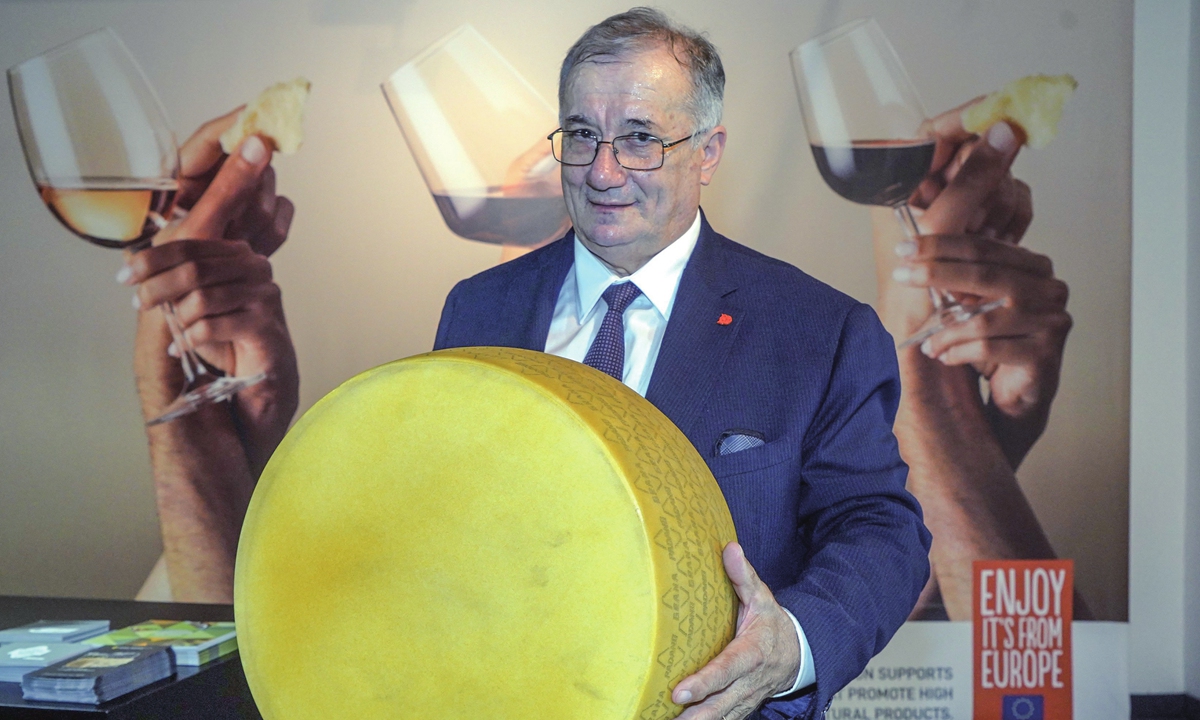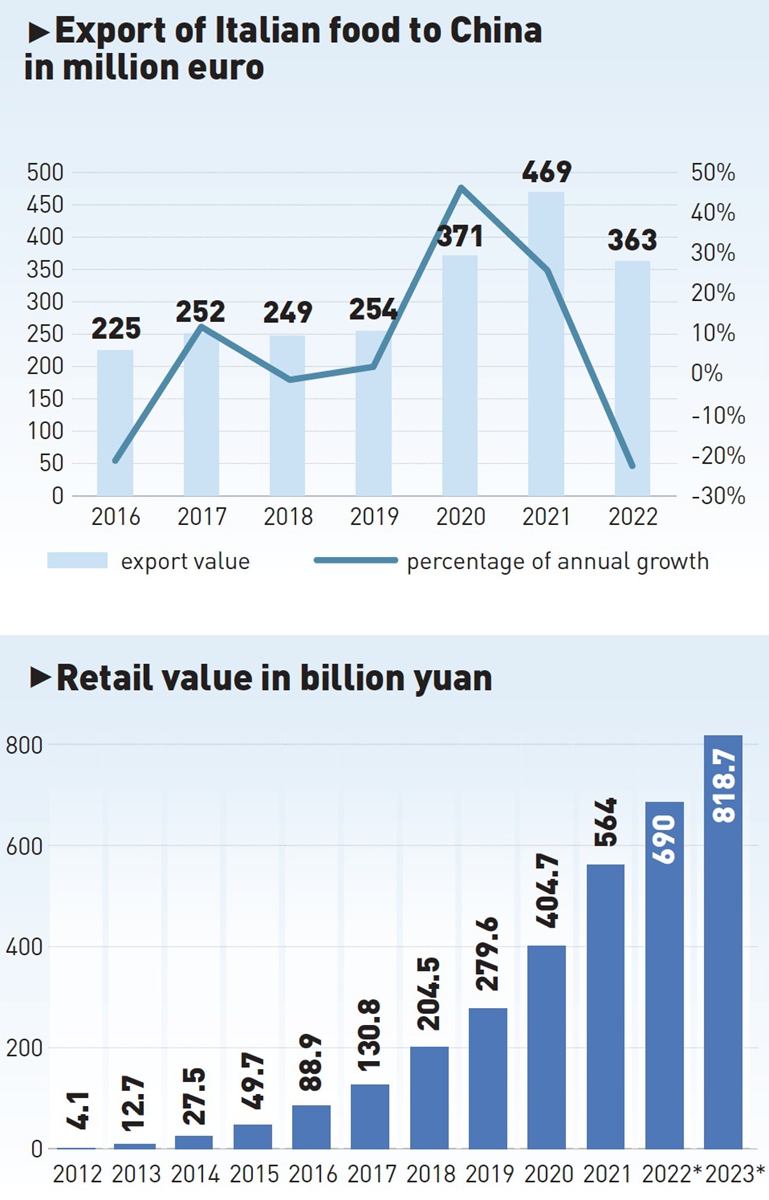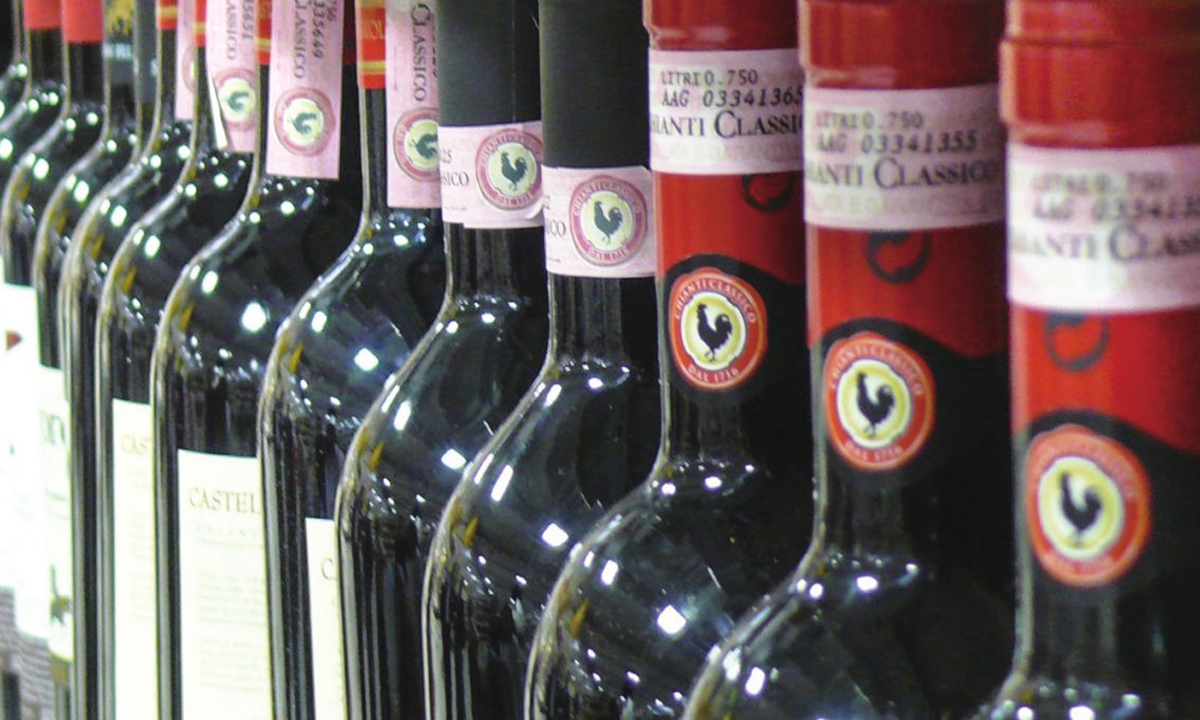
Renato Zaghini, president of the Grana Padano Protection Consortium
According to Clark Meng, global sourcing manager of JD.com, a major player in Chinese e-commerce, "the online sale of fresh products will be crucial in the future." With a smartphone in hand, he gave a live demonstration of how easy it is to purchase fresh fruit online in China. For Italian producers attempting to boost the presence of authentic Made in Italy products in China, currently limited mainly to kiwis, pears, and red oranges due to stringent phytosanitary barriers, the internet could prove to be a game-changer, especially when combined with efficient logistics. The market statistics are staggering: The gross value of goods traded through e-commerce in China's rural areas, home to half of the country's 1.4 billion population, has surged to $46 billion, accounting for approximately 15 percent of all national e-commerce transactions.Since 2012, China has become the world's largest market for food products and the second-largest for retail, behind the US. It is poised to maintain this preeminence as urbanization rates and per capita disposable income increase. Furthermore, food consumption growth is no longer primarily driven by first- and second-tier cities but is spreading across broader geographical areas, spurred by a general increase in disposable income. In 2022, the surge in the consumption of food, beverages, and tobacco had an impact on both urban and rural areas with 3.2 percent and 5.5 percent increases respectively.
China's consumption patterns are currently aligning with those of more developed economies, making them more similar to Western trends. In recent years, especially in the wake of the pandemic, there has been a notable shift toward a preference for healthy and sustainable food products. This has resulted in an increase in the sales of plant-based dairy products, driven by Chinese consumers' desire to incorporate healthier options into their diets.
Chen Dan, president of Guangdong Evergreen, emphasized the value of international certification programs such as the Best Aquaculture Practices (BAP) certification in promoting locally produced fish that meet globally recognized standards.
Dan explained that as Chinese consumers become more concerned about food safety, they are increasingly turning to reputable companies that implement stringent controls, especially now that China has become a net importer of fish. Additionally, Dan noted that tilapia prices have been at their highest levels in the last three years as producers rush to market their product in the US ahead of the 25 percent tariff scheduled to be imposed on January 1.
He Guohua from Grandma's Home, a renowned high-end restaurant chain in China, stated that international certification programs will play an increasingly important role in ensuring that consumers receive safe and nutritious food.
He highlighted the chain's commitment to incorporating BAP into its fish sourcing policy in the future. Rachel Huang from Sam's Club China further emphasized the importance of BAP in the retailer's fish sourcing policy, as the program includes social responsibility measures.

Luigi Scordamaglia, CEO of Inalca S.p.A.
How to play-inAnother example concerns the consumption of dairy products such as cheese, which has traditionally been low in China, primarily due to the fact that approximately 92 percent of the adult population is lactose intolerant. Nevertheless, the increase in disposable income and a heightened interest in healthy products are driving the demand for dairy among Chinese consumers. Currently, aided by governmental promotional initiatives advocating a daily intake of at least 300 grams of dairy products, these foods are perceived as a valuable source of protein and calcium.
On the other hand, driven by a set of governmental policies aimed at enhancing the safety of local products and restoring consumer trust in domestic producers following the 2008 melamine milk scandal, the Chinese market has become less reliant on foreign imports of dairy products. There is still plenty of room for growth for international competitors within the sector, as per capita consumption of such products remains significantly lower than nations like Italy and France as well as culturally and geographically closer countries such as Japan and South Korea.
The meat market in China plays a prominent role, considering that China is the world's largest producer, importer, and consumer of meat. In particular, the Chinese diet involves a high consumption of pork, accounting for 54.2 percent of overall meat consumption. However, a significant segment of Chinese consumers, particularly in higher income brackets, is shifting toward the consumption of other types of meat, particularly beef, considered a healthier and more prestigious alternative to pork, according to a McKinsey survey.
Furthermore, in contrast to previous years, China has reduced its reliance on foreign pork suppliers, thanks to the recovery of domestic production following the African swine fever epidemic in 2018.
The coffee industry is also experiencing significant growth, gaining popularity among Chinese consumers. From a market value of 31.1 billion yuan (approximately $4.3 billion) in 2016, the Chinese coffee market increased to 113 billion yuan in 2021. However, the growing demand for coffee in China has yet to be matched by a corresponding increase in domestic production, as local growers often prioritize crops with higher profit margins. Consequently, there is a necessity for foreign coffee imports to fulfill the rising demand.
This situation presents a significant opportunity for foreign companies seeking to invest in a market with substantial growth potential, especially considering that coffee consumption in China still lags behind that of both Western and other Asian countries.
However, despite the present and future growth prospects, a series of barriers, both tariff and non-tariff, persist, preventing Italian enterprises from fully capitalizing on the potential of their exports to China. In the food sector, challenges include customs control and inspection procedures, labeling and registration requirements for production facilities, and the Chinese regulatory system.
For instance, approval for the entry of Italian pears into the Chinese market took years, despite the positive outcomes of recent inspections conducted by Beijing authorities and the Italy-China Government Committee. The official announcement of China opening its market to Italian pears came during Fruit Attraction, the international industry event held in Madrid, which was attended by Coldiretti President Ettore Prandini and Filiera Italia CEO Luigi Scordamaglia.
"The overcoming of these phytosanitary barriers and the opening of markets like China have always been top priorities for the promotion of Made in Italy products. However, it is crucial that such market access is increasingly managed at the European community level by the Commission, negotiating on behalf of all member states, thereby avoiding selective interventions by individual countries that could potentially lead to competition within the European single market," Scordamaglia emphasized.
Pears are a flagship product of the national agricultural sector, particularly in the Emilia-Romagna region, which was severely affected by floods in May of 2023. This region serves as the primary pear production area in Italy, boasting products bearing the Protected Geographical Indication (PGI) label.
According to Coldiretti and Filiera Italia, the conclusion marks the end of this negotiation. Additionally, this new provision opens up discussions about apples.
After eight years of extensive negotiations, the competent authorities in Beijing have also finally granted approval for the import of Italian rice varieties, a top product of Made-in-Italy agri-food excellence. Thanks to this agreement, Italian rice varieties will now be sold in China to tens of millions of consumers.
The Italian Embassy in Beijing has announced that all Italian rice mills that sought authorization to export to China have received approval from the relevant Chinese authorities, in accordance with the protocol established between the two parties on April 8, 2020.
"We can only express satisfaction for the new opportunities that will unfold for Italian rice growers. The Made-in-Italy agri-food sector has long been attracting considerable interest in the Chinese market," Giovanni Daghetta, president of Confederazione Italiana Agricoltori (CIA) Lombardia and a rice grower from Pavia, explained.
This achievement is a testament to the extensive efforts made by institutions, the entire supply chain, and rice companies that collaborated closely with the Chinese ministry to ensure the successful outcome of these negotiations.
Italy is currently the leading rice producer in the EU, contributing to over 50 percent of total rice production.
Italian rice stands apart from that cultivated in the rest of the world thanks to its typical varieties, enhanced by PDO and PGI labels that recognize the unique characteristics of their respective regions of origin.
With 228,000 hectares cultivated (a 4 percent increase in 2020) and 4,000 companies responsible for harvesting 1 million tons of processed rice, the Italian rice landscape encompasses over 200 varieties, ranging from the renowned Carnaroli, "the king of rice," to Arborio, Vialone Nano - the first PGI rice - Roma, and Baldo. While wine remains the most consumed Italian food product in China, Coldiretti highlighted positive expectations for the export of fresh Italian fruit, vegetables, and rice as well.

charts
Wine demandThe alcoholic beverage market in China has traditionally been driven by the consumption of spirits, notably Baijiu, and beer.
However, the Chinese wine market is currently undergoing rapid growth and transformation, influenced by evolving consumer habits and increased purchasing power.
According to a survey conducted by the Hong Kong Trade Development Council (HKTDC) of China's Hong Kong Special Administrative Region, Chinese consumers prefer red wine, while white wine is more popular among the 26-45 age group.
Despite this, wine consumption is not yet an integral part of Chinese dietary habits. With social occasions limited due to pandemic era lockdowns, there was a noticeable decline in wine demand. This is evidenced by a significant drop of 21.9 percent in domestic wine production and a 21.1 percent decrease in imports in 2022.
Chinese wine production is facing tough competition from foreign suppliers, especially the French, whose products are considered to be of higher quality. Since 2017, domestic production has consistently declined, favoring an increase in wine imports. While foreign suppliers held a 32 percent market share in 2015, this figure rose to 60 percent by 2020.
The challenges faced by Chinese wine producers are further highlighted by a decline in sales revenue, which decreased from 46.6 billion yuan in 2015 to 9 billion yuan in 2021.
The imposition of heavy tariffs on Australian wine, which represented 39.05 percent of wine imports to China until 2020, has significantly diminished Australia's market share, benefiting other suppliers.
France has particularly seized the opportunity, with its market share increasing from 27.8 percent in 2020 to 46.1 percent in 2022, while Chile's market share increased from 12 percent in 2020 to 22.7 percent in 2022.

Wine bottles of Classic Chianti



